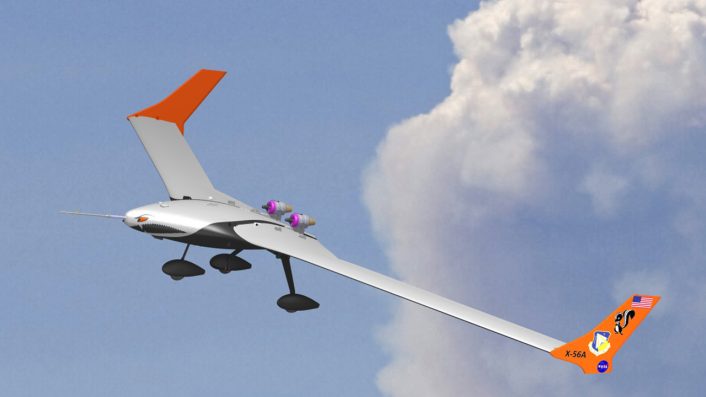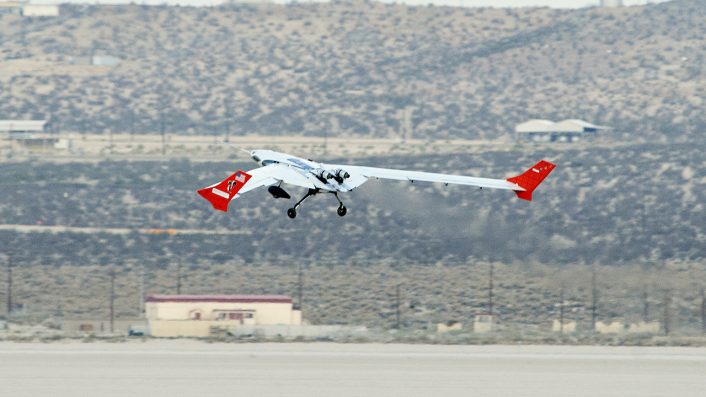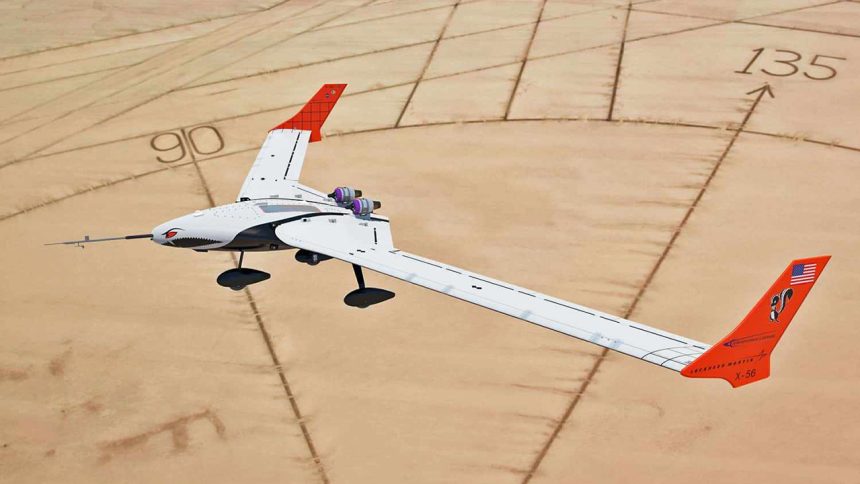Some aspects of the X-56A drone’s design, such as the landing gear systems and cameras, will be modified to demonstrate that a digital model can be reliably certified for flight before the physical aircraft is built.
The Flyer Øne initiative, named in homage to the Wright Brothers, aims to develop a digital-first, fixed-wing unmanned aircraft. The program will create and flight-certify a digital twin of an aircraft before it’s physically built, setting a new standard for speed and innovation in aerospace development.
Last year, the United States Air Force Research Laboratory awarded Istari Digital, Inc. a $19 million contract to secure the world’s first airworthiness certification.
After a year of speculation about the industry partner involved, Istari Digital revealed that the program will modify the Lockheed Martin Skunk Works X-56A to achieve the first digital flight release. The news was made public after the the project successfully passed the Critical Design Review (CDR), a crucial step towards achieving the first digital flight release.
The X-56A, is a modular uncrewed aerial vehicle, originally developed by Lockheed Martin Skunk Works for the Air Force and NASA to push the boundaries of high-altitude, long-endurance flight. With a 7.5-foot fuselage and a 27.5-foot wingspan, the X-56A has already demonstrated its capability in testing flutter suppression and advanced flight control technologies.

“Having just passed a major design review, we’re thrilled to announce the modification of the Skunk Works X-56A,” said Dr. Will Roper, Istari Digital’s Founder and CEO, as well as former Air Force’s Service Acquisition Executive. “The United States Air Force X-Plane program has a storied history of breaking physical boundaries, from the sound barrier to sub-orbital flight. Now, they’re breaking digital barriers too.”
The X-56A’s design will undergo significant modifications, including updates to landing gear systems, cameras, and obsolescence issues. These changes will be validated through Istari Digital’s new digital engineering platform, which will simulate and certify the aircraft’s performance virtually, making the X-56A a prime candidate for this groundbreaking digital certification process.
Digital Engineering: From Formula 1 to Aviation
Digital certification is already routine in industries like Formula 1 racing, where thousands of digital cars are designed and tested each season without ever being physically built. Istari Digital aims to bring similar agility and speed to aerospace, demonstrating that a digital aircraft can meet real-world performance and safety standards through authoritative digital modeling and simulation.
“It’s not as futuristic as it sounds,” said Roper. “For a new aircraft variant, if the structure and flight dynamics can be simulated accurately, physical prototypes become the slow lane. Hardware as software is the fast lane.”
The Flyer Øne program represents a shift towards digital-first engineering in aviation, addressing the slow and costly nature of traditional physical prototyping. Istari’s new “plug-and-play” digital thread technology will serve as an interface between Lockheed Martin’s existing X-56A simulations and the Air Force’s rigorous airworthiness process, creating a seamless digital ecosystem that integrates models, simulations, requirements, and certifications across the aircraft’s lifecycle.
During his tenure as the Air Force acquisition chief, Dr. Will Roper had already been a strong proponent of Digital Engineering. In September 2020, alongside Secretary of the Air Force Barbara Barrett, Roper introduced the “e-Series” or “Digital Century Series,” a new approach to aircraft development. To elaborate on this concept, Roper authored a guidebook titled “There is No Spoon,” inspired by the 1999 film “The Matrix.”
The guidebook outlines that the T-7A Red Hawk was the first aircraft developed under this digital engineering framework, earning it the designation eT-7A. Digital engineering enabled the eT-7A to be designed and produced in just 36 months—a pace not seen since the development of the third-generation “Century Series” fighters in the 1950s.
Dr. Roper suggested that this continuous development model could lead to a 25% increase in development costs and an 18% rise in production costs. However, it also promises a 79% reduction in modernization costs and a 50% decrease in sustainment expenses, contributing to a significantly younger combat aircraft fleet.
According to Roper, the broader Digital Century Series are built on three core principles Roper referred to as the “digital trinity”:
- Agile Software Development: Leveraging full digital threading with containerized software that is continuously developed, tested, and updated based on real-time feedback (similar to Kubernetes).
- Open Architecture Systems: Utilizing modular, government-owned reference hardware and software that facilitate rapid upgrades and integration of new capabilities.
- Digital Engineering: Employing advanced computer-aided engineering (CAE) and Digital Twin technologies to create a virtual representation that accurately reflects real-world performance.
“Digital engineering elevates computer creation technology by rendering not just the design of complex systems, but also their assembly, environment, and physical performance within high-powered virtual reality,” Roper explained. “Strategically, the goal is to flip the existing acquisition model—replacing real-world activities with digital processes to achieve greater speed and agility,” Roper wrote. “In future militaries, speed and agility will be more formidable weapons than any single system we could develop.”
Flyer Øne: The New Paradigm for Airworthiness Certification
Once the digital X-56A meets all the requirements for a Military Flight Release, the aircraft will be built to specification and flown at Edwards Air Force Base, California. If the “physical” aircraft performs as expected, it will validate the digital certification process and open the door for future aircraft to be developed and certified using similar digital methods.
“This is not about making mistakes magically disappear,” Roper noted. “But industries from Formula 1 to medical devices have shown that digital transformation is possible. It’s time for aerospace to push its digital boundaries.”
Istari Digital, founded by Roper and backed by former Google CEO Eric Schmidt, is at the forefront of this transformation. The company is building the world’s leading digital engineering collaboration platform, making digital threads accessible and impactful. Earlier this year, Istari launched Model Øne, a program to connect digital engineering tools across the Department of Defense, aiming to create an “internet of models” that will simplify and accelerate technological development.
Risks and Rewards of a Digital Future
While the Flyer Øne program promises unprecedented speed and agility in aircraft design, it also brings new challenges. The X-56A’s success relies heavily on existing data and models, and any errors in simulation could have significant consequences. Roper cautioned against over-reliance on digital models, citing examples from other industries, such as the unexpected aerodynamic issues faced by Formula 1 teams when new regulations were introduced.
As the aerospace industry prepares to embrace this new era of digital certification, Istari Digital and the U.S. Air Force are leading the way. The Flyer Øne program is set to redefine the standards of aircraft design and certification, proving that in the race for technological superiority, speed and innovation will be key.
“Showing up with the right product too late is a losing strategy,” Roper concluded. “With Flyer Øne, we’re creating a faster lane for aviation—one that keeps pace with the demands of modern warfare and the rapid evolution of technology.”
The History of X-56A
In 2005, the Skunk Works team undertook a groundbreaking initiative to address an often-dangerous interaction between an aircraft’s structural flexibility and aerodynamic forces, a phenomenon called “flutter”.
By definition, flutter is a potentially dangerous and complex phenomenon that occurs when an aircraft’s structural components, such as wings, tail surfaces, or control surfaces, undergo rapid, self-excited oscillations due to the interaction between aerodynamic forces, structural elasticity, and inertia. This dynamic instability can result in catastrophic failure if not properly managed or controlled.
The approach by Skunk Works, Lockheed Martin’s innovation arm, was to use a design methodology that enabled accurate prediction and control of flutter. By employing active control techniques, they achieved a remarkable 75 percent increase in Body Freedom Flutter (BFF) speed, validated through extensive flight testing.

The X-56A originated from the Air Force Research Laboratory’s Multi-Utility Aeroelastic Demonstrator (MAD) program as the Multi-Utility Technology Testbed (MUTT). This modular unmanned aerial vehicle (UAV) was specifically developed to explore active flutter suppression and gust load alleviation. Its slender, high-aspect-ratio wings were designed to operate at the limits of the flight envelope, enhancing overall aircraft performance.
Since its first flight in 2013, the X-56A has made significant progress in advanced flight control, demonstrating its prowess in predicting and suppressing flutter with its flexible wings. These achievements have set the stage for the next leap in aircraft design, integrating digital advancements and support the digital certification effort.









